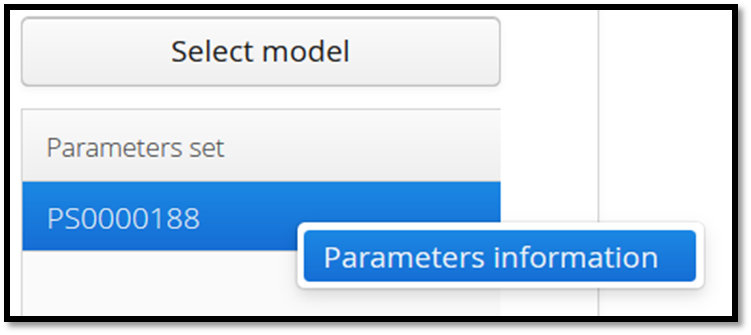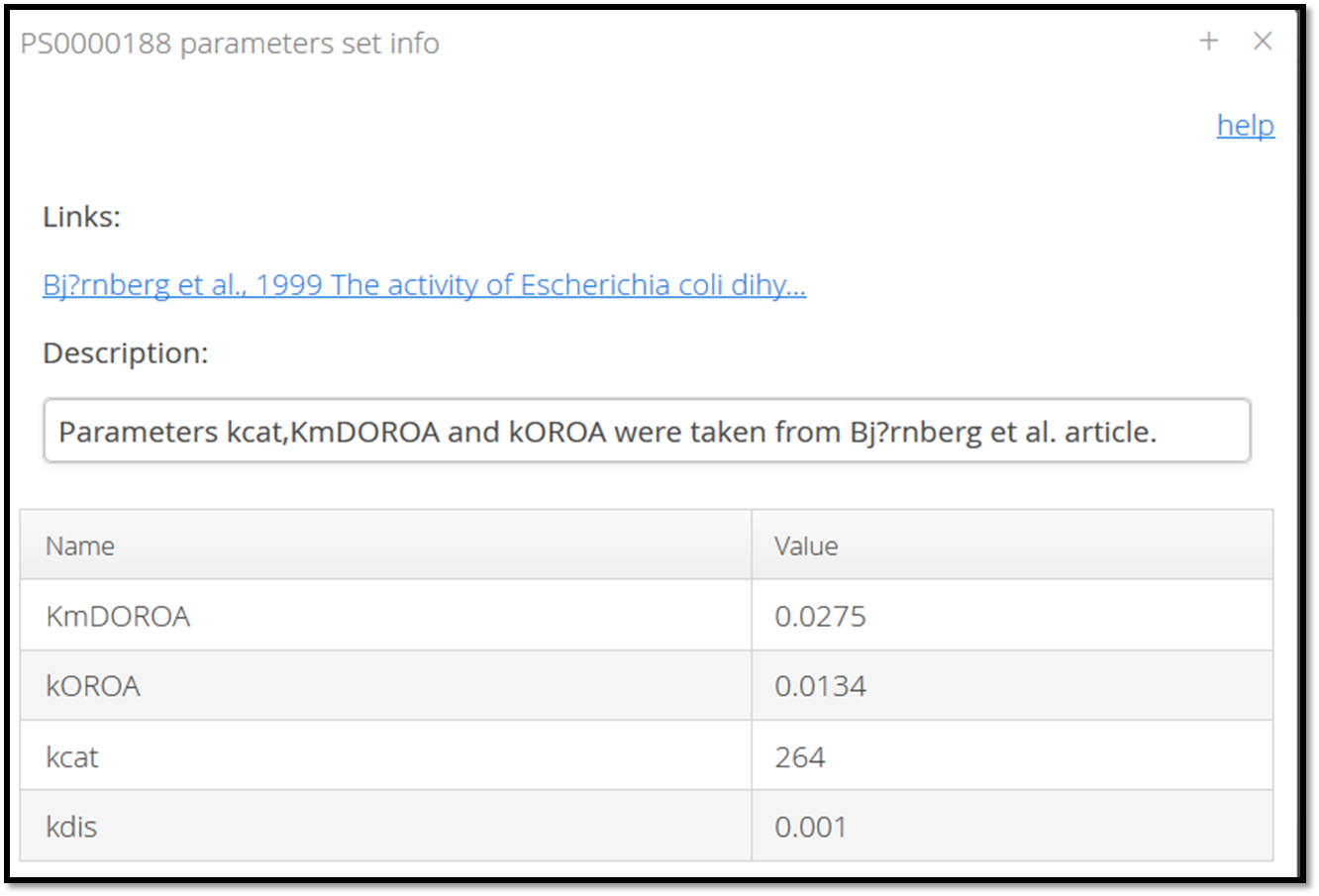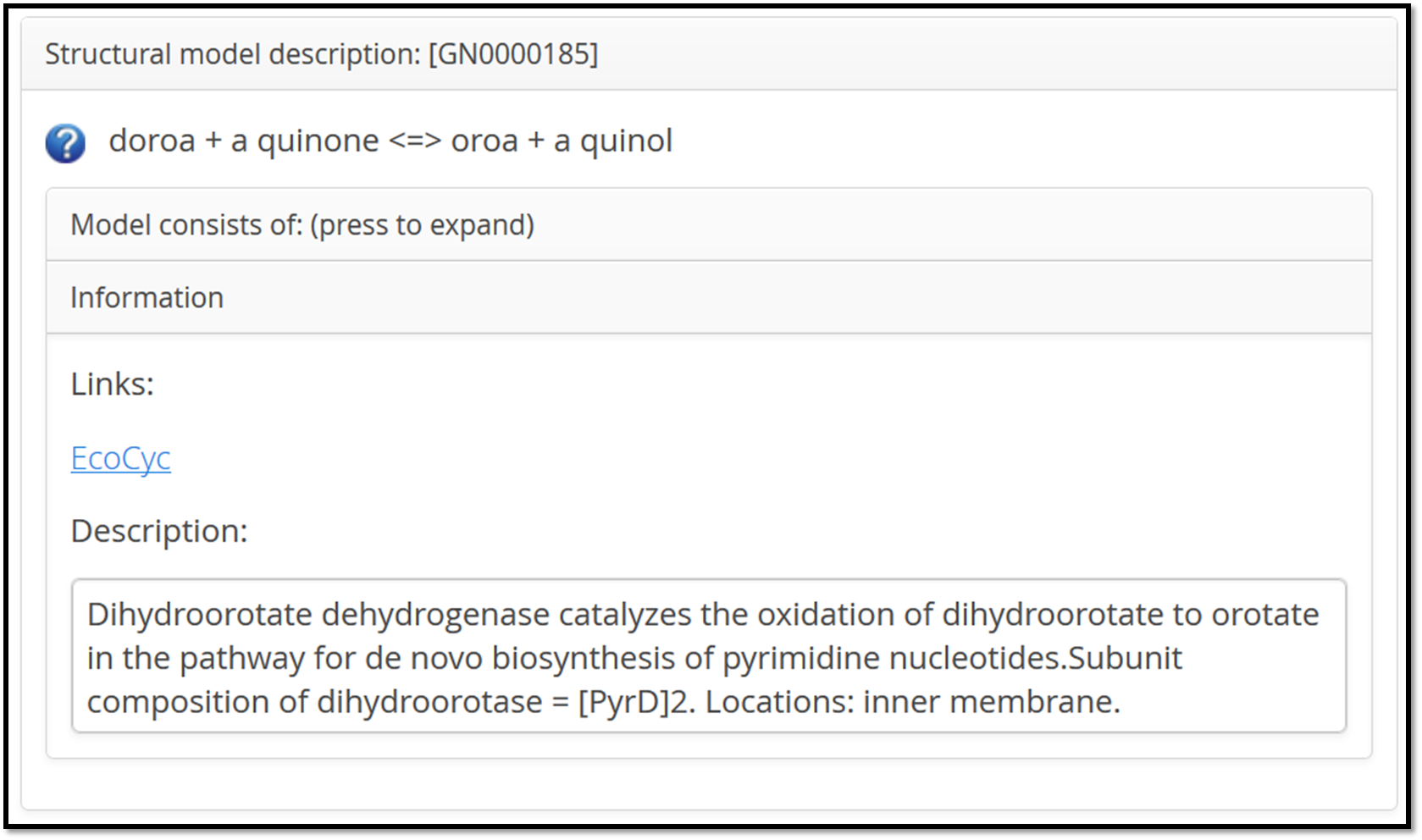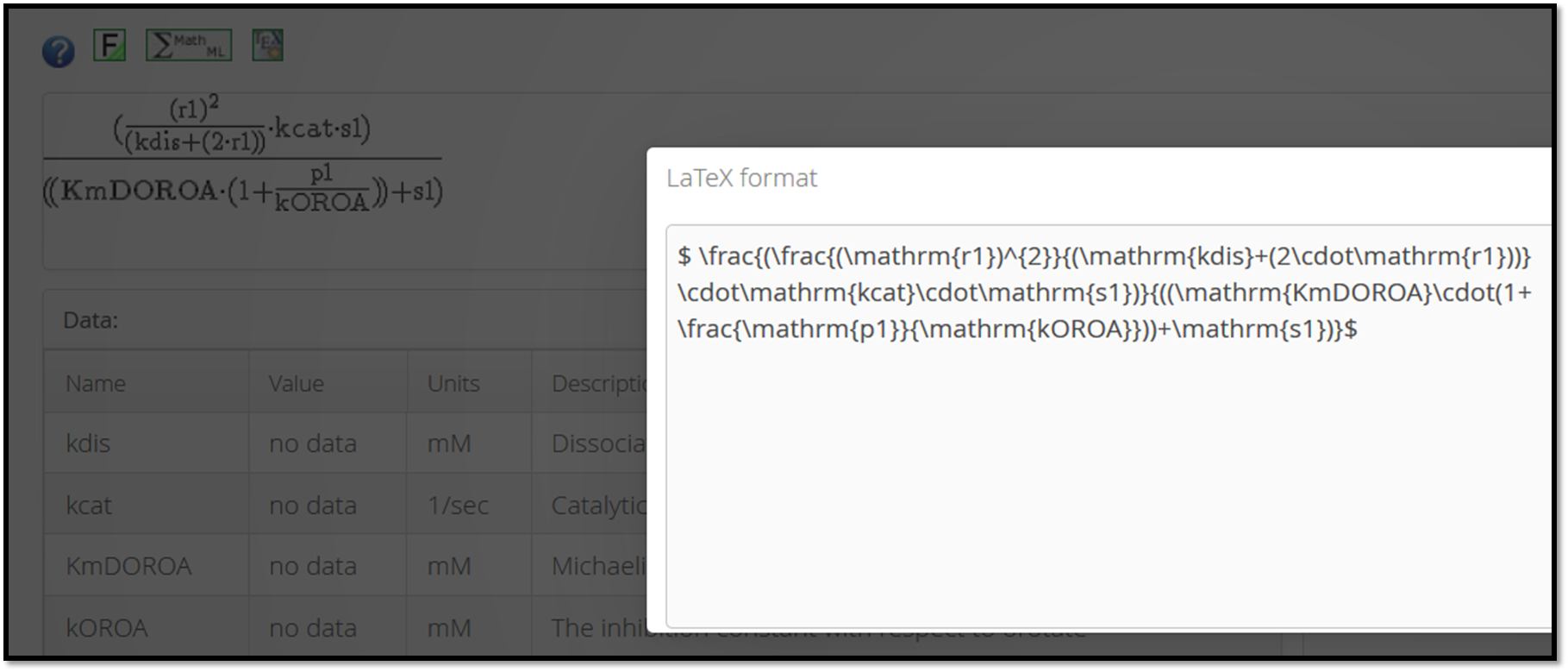

MAMMOTh database is designed for storage and accumulation of elementary subsystem models of biomolecular systems. Elementary subsystem model is the “functional network” model where the entities of the network and the mathematical model parameters are specified. The dynamics of each elementary subsystem model is related to published experimental data, which are referenced in the corresponding “model description” field. Each mathematical model in the database has the description field where one can find references on articles which were the basis for the model development or which contain a quantitative experimental data used for model parameters fitting. The mathematical models were manually curated and verified by expert authors. Each model in the database has been developed on basis of the general entities vocabulary. It makes possible to compare entities in the different models by identifiers directly. Using this property, MAMMOTh provides some functionality for manipulation with models. To follow the “building blocks” strategy for complex models reconstruction we have implemented a method of template models generation reconstructed by the automatic composition from a subset of elementary models which are presented in the database. These assembled models can be exported in such well known formats as SBML, MATLAB, MATHEMATICA, and Pajek for further analysis in other tools.
The web-interface of MAMMOTh enables the user to search for models by names and types (gene, RNA, protein and substance) of entities (see Figure). To search the mathematical model it’s necessary to enter in the search field name or a part of the name of their components (metabolites, genes, RNAs or proteins) involved in the description of an elementary subsystem (Note: there’s case sensitive search field!):

As a result of the search the system generates a list of structural models and their IDs in MAMMOTh the components of which have a match in at least one of synonyms. If user doesn’t write any symbols in the search field and click the left mouse button on the “search” the result of the search will be the list of all structural models in the database.
The choice of the structural model is performed by clicking the left mouse button on the title of the structural model. As a result, the choice of specific structural model appears to the right part of its description (list of substrates, products, regulators), below - a description of mathematical models corresponding to the chosen structural model, and a list of options:

Information and links to external sources (publications, links to another database) are presented in section «Information». Activation of this field is performed by pressing the left mouse button on its panel:

In order to turn back, for example, the description of the structural model, you need to click the left mouse button on the panel «Model consist of»
The transition between mathematical models of a structural model is performed by the Tab selection of the required models.
After the selection of particular mathematical model (It could be several for the one structure model) you obtain its description. Rate reaction functions are visualized as mathematical formulas. Each model has an information field with the model description and links to relevant publications as well as a list of parameter sets in the section describing the mathematical model. A several sets of parameter values can be stored for the individual model in the database.

Reaction rate is presented in each mathematical model can be saved in three formats: text, MathML, LaTeX. The choice of the storage in a particular format is performed by clicking the left mouse button on the appropriate icon.


Choosing a specific set of parameter of the active mathematical model is performed by pressing the left mouse button on its name in the list.
In the description field of parameters appear values of the model parameters.
By clicking the right mouse button in the list on ID of the parameters set you can get a link to an external source of information where values of the parameters were given.


After selecting a specific set of parameters the mathematical model can be transferred in the section "selected models" by clicking the left mouse button on the «select model».
The certain set of parameters can be selected by clicking the «select model» button which in turn allows the user to transfer mathematical model in the section «selected models» in upper right corner of the application window (see Figure). The user compiles a list of elementary models by the scheme described above. In list view you can delete unnecessary mathematical model by clicking the left mouse button on the button «remove».

After completion of the selection procedure the user can reconstruct a mathematical model from elementary models by selecting the appropriate format and clicking the «generate» button. Models are automatically assembled by the formation of global rates of component concentration (model variable) changes. The global rate represents rates sum of the model variable changes in the selected elementary models. MAMMOTh supports export of the BMS (biomolecular systems) elementary subsystem models or models bunch, integrated into the complex one model, to the well-known standards: SBML, MATLAB, MATHEMATICA, and Pajek. Due to the fact that each model in the database was adapted to the experimental data, further investigation will take less time to solve the parameters fitting (inverse) problem for the exported complex model. The models bunch integrated into the one model could be a «growth point» in the process of complex models development and fitting or it can be just a part for more extended model(s) being developed in any other tool. We remove the support model information during the export to ensure non-conflicts with the selected standard. Selecting the desired format generation of the mathematical models and clicking «generate» MAMMOTh will automatically generate a mathematical model based on the model list in the section «selected models» (Note: please, to save the model on your computer unblock the pop-up windows for this web-site!).
All question about MAMMOTh send to the kazfdr [at] bionet.nsc.ru.